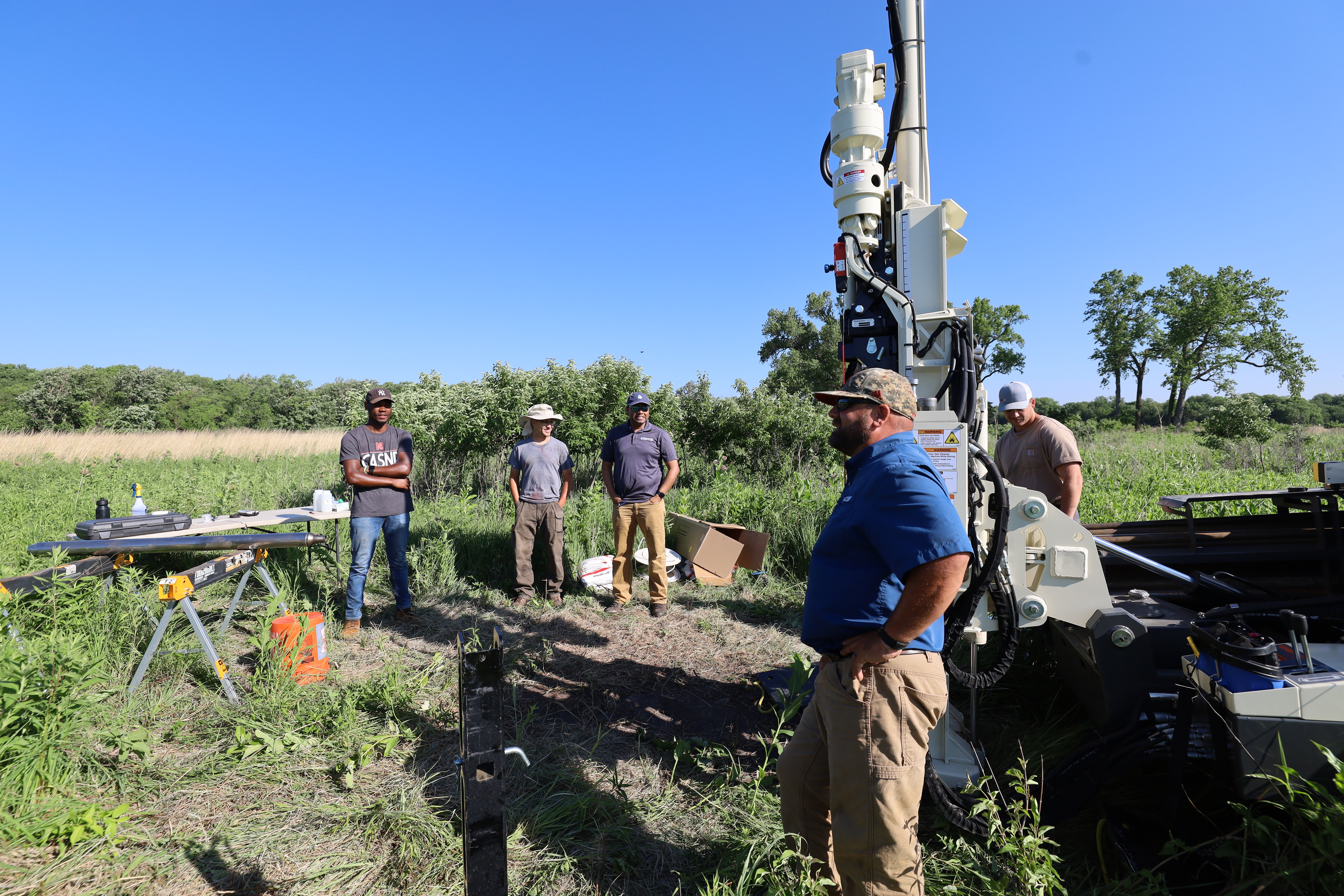
— byYvon Ukwishaka, SNR Graduate Student
Surface soil, the deeper vadose zone, and groundwater are all interconnected and of particular importance due to Nebraska’s agricultural practices and reliance on groundwater for multiple uses. The vadose zone refers to the unsaturated zone above the water table, where water and air occupy the pore spaces in the soil and rock. It plays a crucial role in filtering and retaining contaminants such as nitrate before it reaches groundwater. Over-application of nitrogen fertilizer in excess of crop needs, together with inefficient irrigation in sandy soils, can lead to the leaching of nitrate through the vadose zone and to the underlying groundwater. Despite its importance, little is known about transformation of nitrate and occurrence of other forms of nitrogen beneath the soil surface.
Read the rest of the article and see more images at:
More details at: https://snr.unl.edu/aboutus/what/newstory.aspx?fid=1069